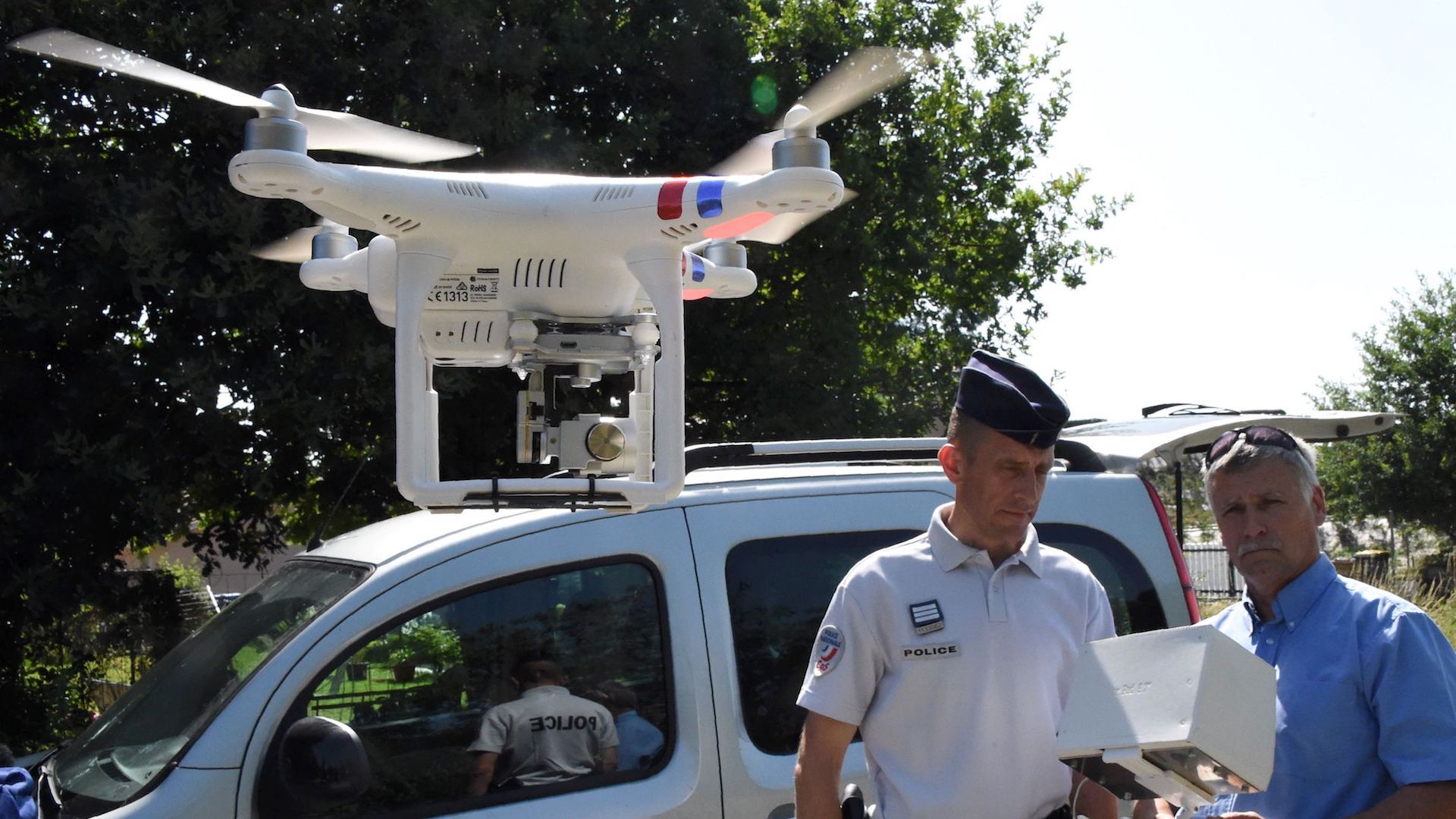

Police in France’s southwestern municipality of Bordeaux began using a drone this summer to catch reckless drivers, resulting in hundreds of fines directly attributed to their new aerial tool. We’ve seen police departments all over the United States ramp up their usage of unmanned aerial vehicles to combat crime, from the LAPD garnering a yearlong drone-implementation go-ahead, to the San Diego, California Sheriff’s Department contentedly utilizing UAVs, and now it seems like Bordeaux, France’s law enforcement is eager to take advantage, too.
According to Marketplace, police captain Pascal Gensous and his officers get their newly-acquired UAV in place above the Bordeaux beltway and then make sure to stay hidden beyond any driver’s line of sight. While the drone hovers above and sends images back to the police on the ground, officers analyze the footage and take it from there. “The drone is very useful because we can see dangerous drivers on the roads without being seen by them,” said captain Gensous.
To be clear, the Bordeaux police use this UAV to catch drivers breaking traffic laws, but are using a drone unequipped with speed-detecting radar technology. What they look for, then, are all the other reckless violations, such as driving too close to another vehicle, illegal passing, and general dangerous behavior. It happens often, and casually. Gensous speaks into his walkie-talkie, stating, “A white truck with red and black letters on the side. Illegal passing.”
In the past few years, what would’ve traditionally been accomplished with the aid of a helicopter, is now being taken care of by drones. Even in Hollywood, California this is the case, and it makes complete sense. Drones are cheaper, easier to pilot, and require far less oversight and safety precautions. Reportedly, once the drone has streamed back footage to the police on the ground, and certain violators have been identified, motorcycle cops down the road are notified. They then go after the violators in question and pull them over, where yet another group of officers awaits to ticket and fine the offenders.
“This kind of operation today we can stop from 15 to 20 trucks in an hour,” said Gensous. Officers like Gensous and his colleagues are excited at the beneficial prospects this kind of technology affords them. But not everyone is as elated. Pierre Chasseray, who represents France’s ‘Forty Million Drivers’ lobby said, “Just think, instead of encouraging drivers to keep their eyes on the road, we now have to look at the side of the road for speed cameras and now in the air for drones.”
According to Marketplace, however, the French government has an impressed eye on the current Bordeaux drone situation. Apparently, it intends to expand this type of traffic surveillance to more areas of the country, and acquire more drones to do so. For those curious enough, take a look at this recent analysis of drones in law enforcement, when, where, and why they are used.